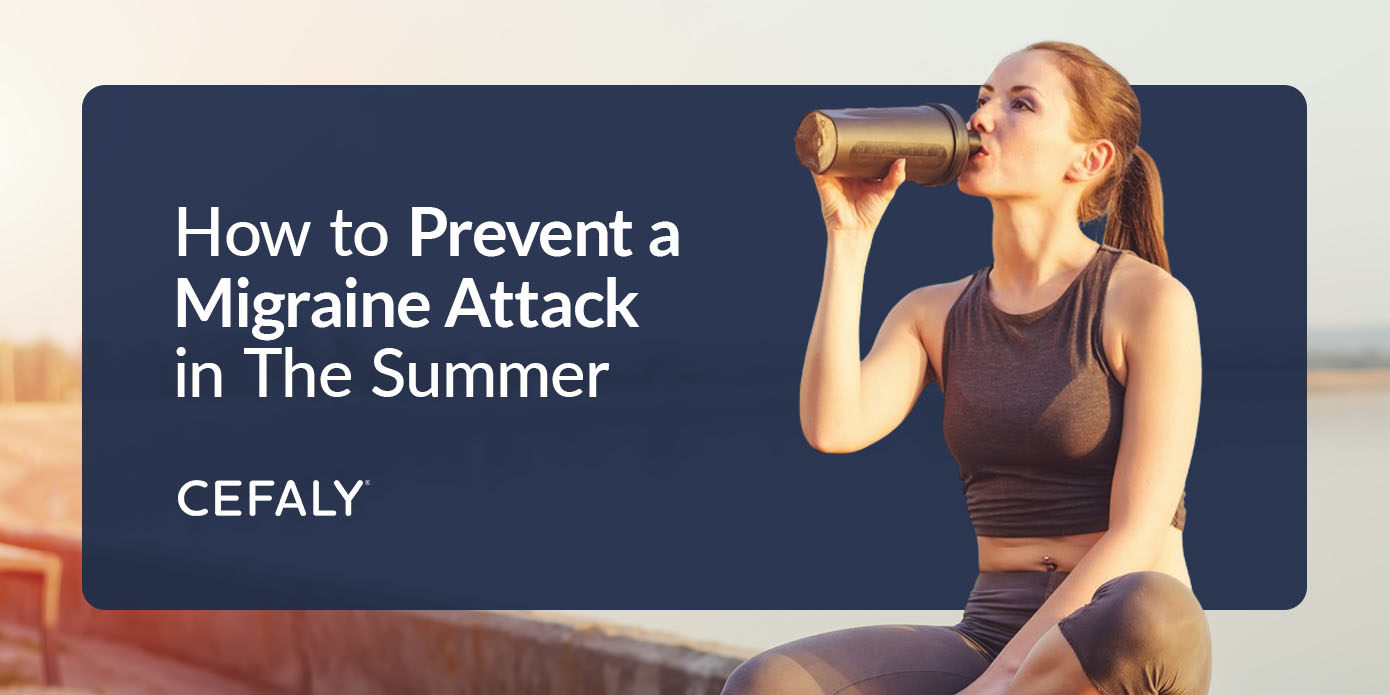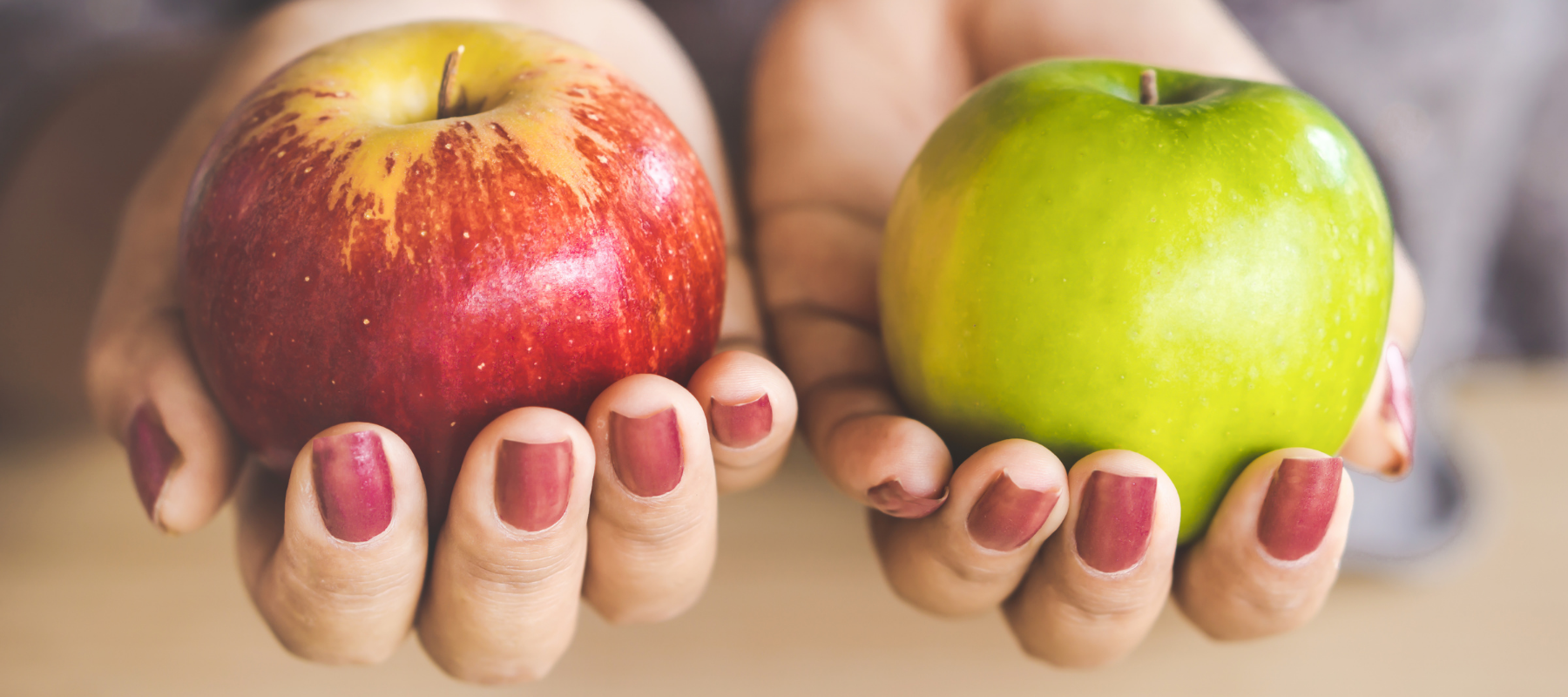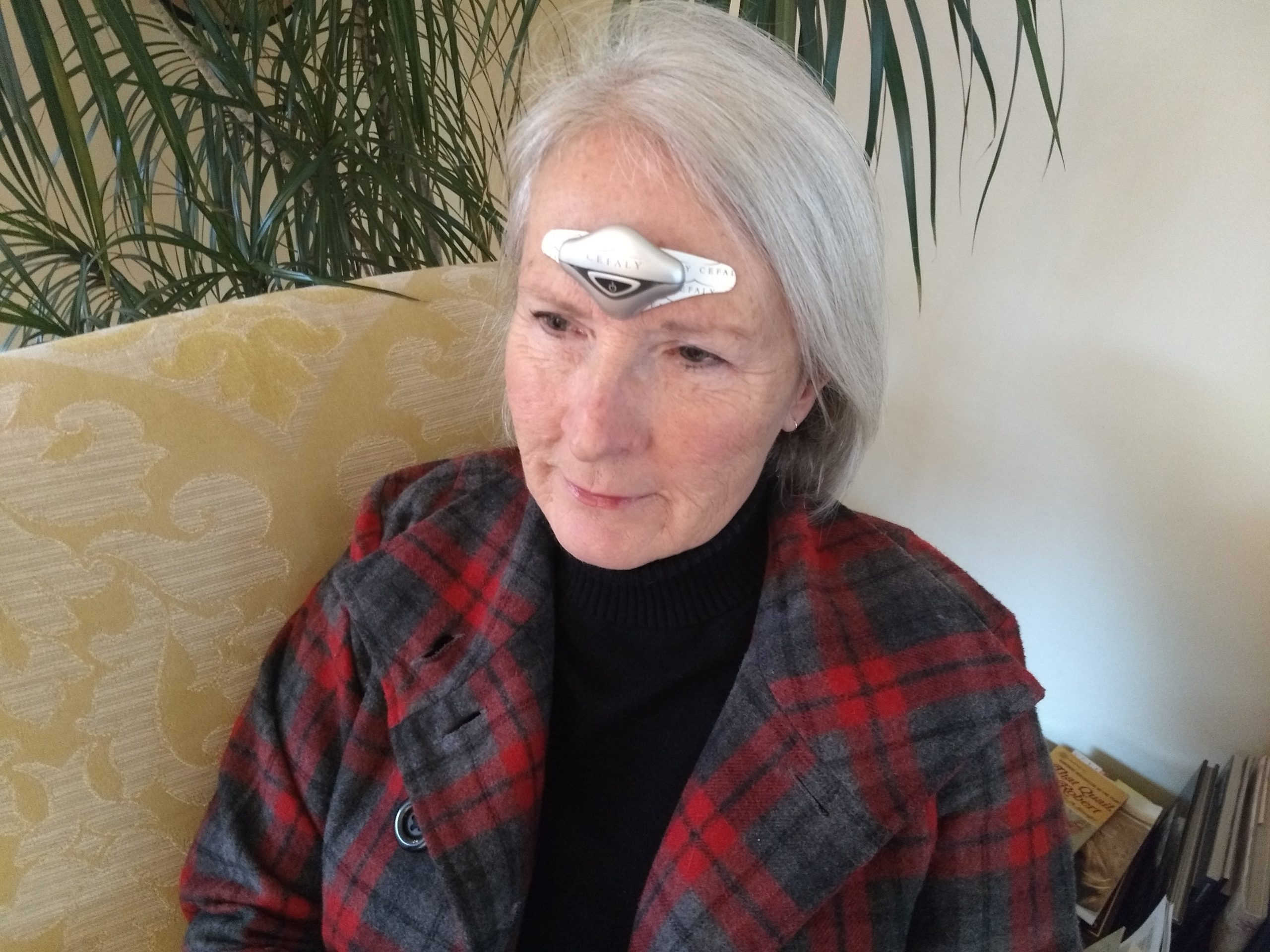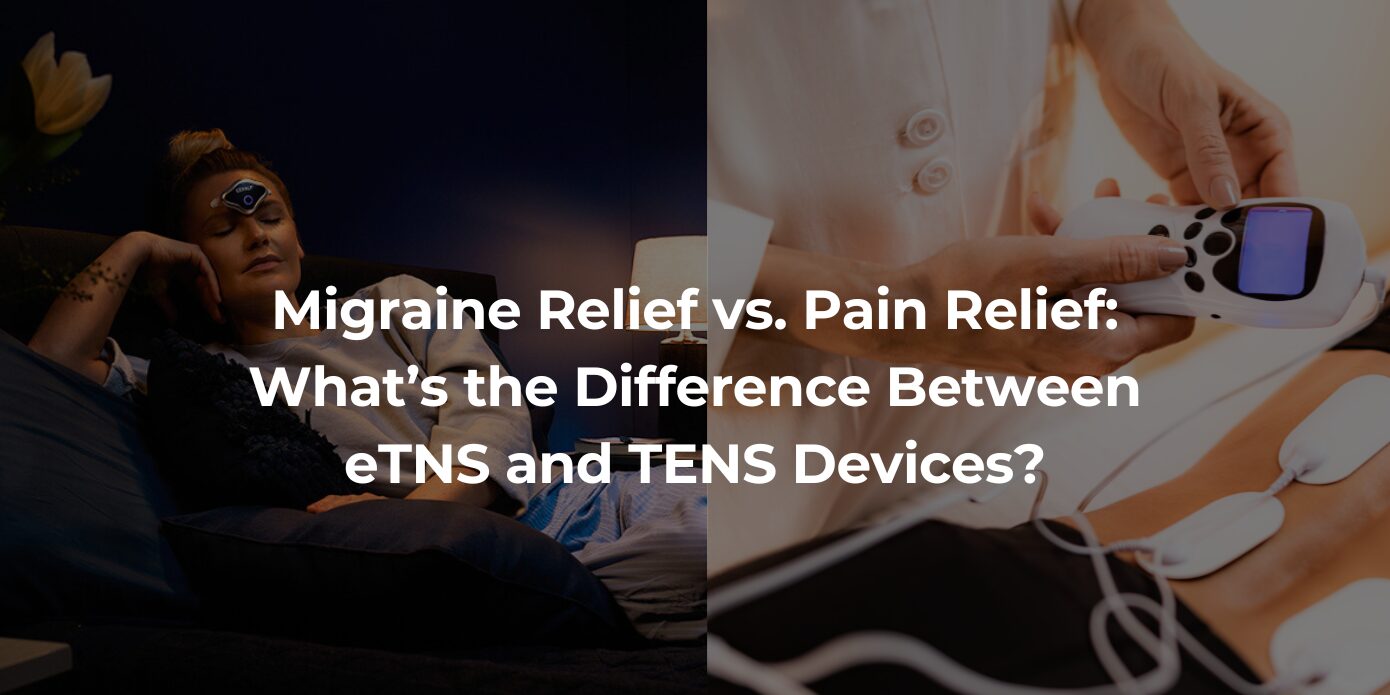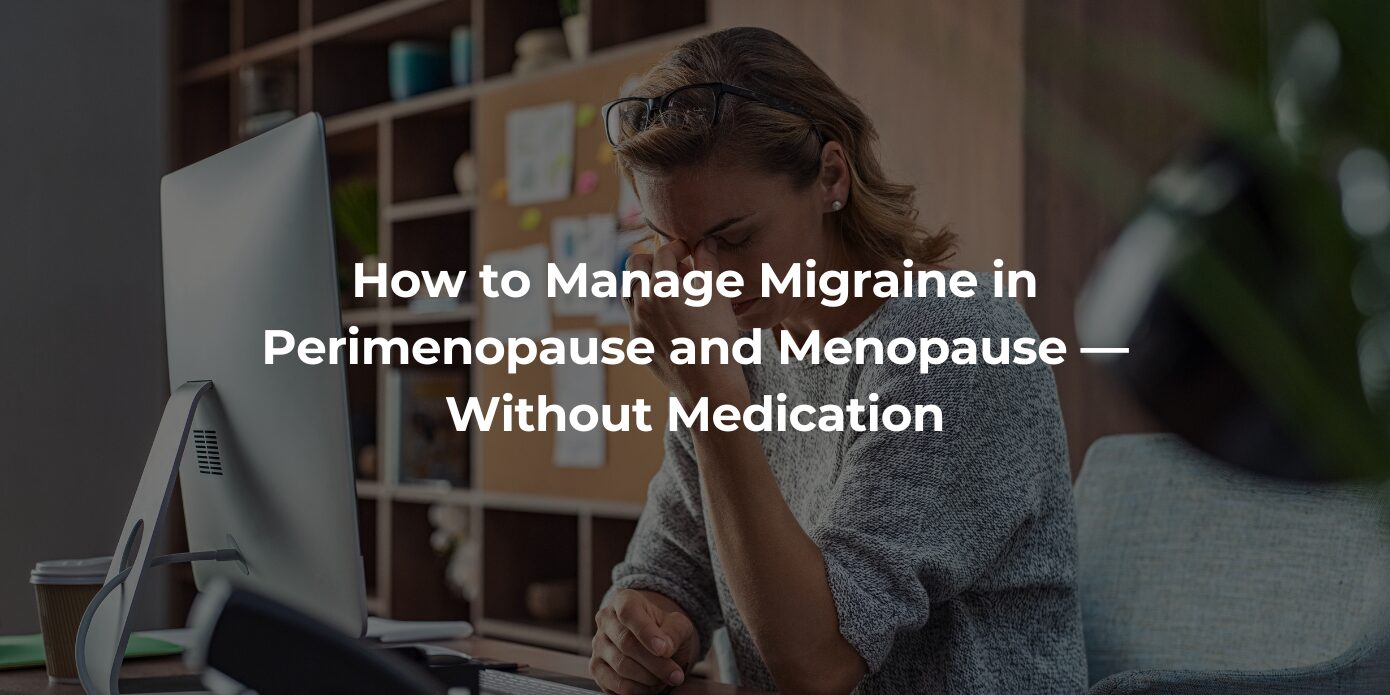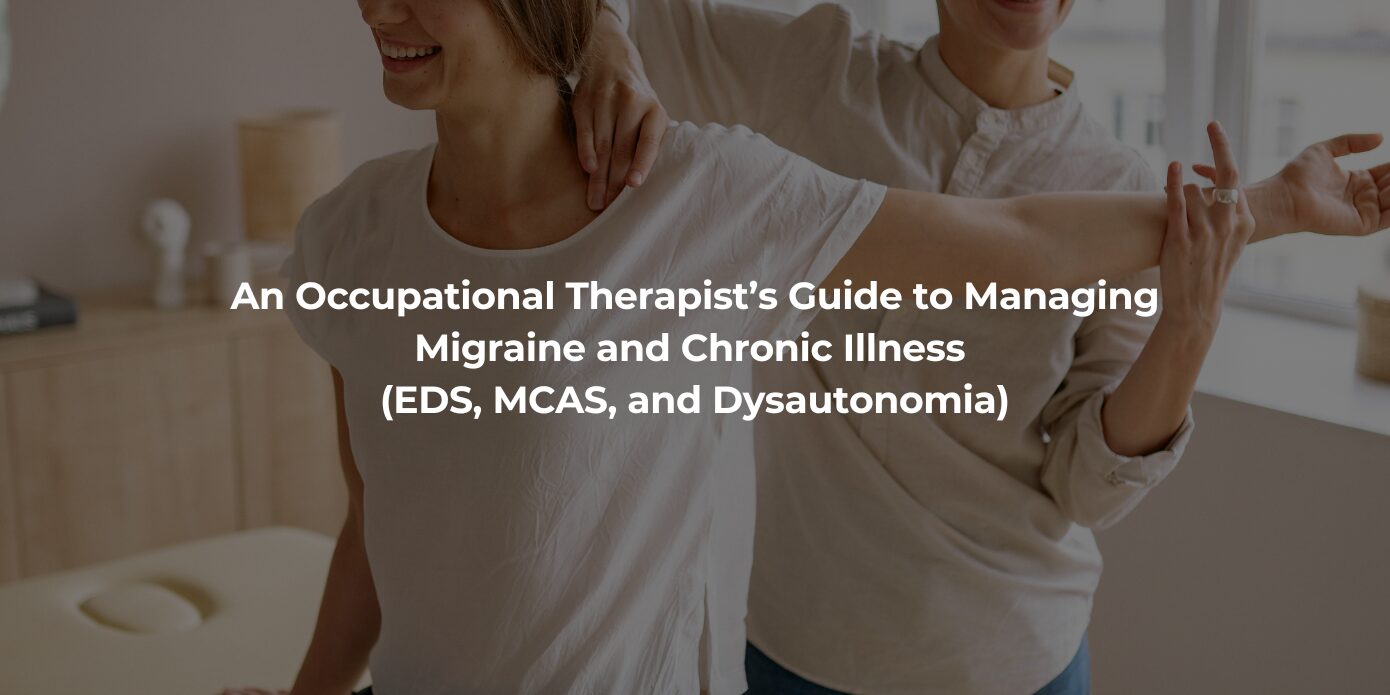When the sun comes out, the only thing on your mind should be pool days and trips to the beach, not migraine pain. Yet, 12% of adults experience migraine, and for many, the warm weather only worsens their symptoms. If your migraine symptoms become more severe or frequent in the summer, you may feel you need to avoid outdoor activities when the temperature rises. Fortunately, migraine doesn’t have to keep you indoors. You can help prevent summer migraine attacks by prioritizing wearing sunglasses, staying hydrated and avoiding overexertion during peak sun hours.
Once you know why your migraine symptoms get worse when the weather gets hot, you can begin to manage them. But don’t worry — you don’t have to figure it out on your own. Here’s a guide to help you understand how migraine is affected by summer weather, with tips for preventing and managing the symptoms.
3 reasons your migraine gets worse in the summer
While it may seem like you get more random migraine attacks in the summer, they may not be as random as you think. The rising temperature and longer days spark a series of changes that may cause your summer migraine. Here are just a few possible triggers:
1. The weather changes
In summer, many regions of the world experience hot, sticky weather as days get hotter. Temperature changes can affect an individual’s body in many ways. If overlooked, these changes can trigger a migraine attack.
Hotter temperatures and increased humidity cause people to sweat more. The more a person sweats, the greater their risk of becoming dehydrated — and dehydration may trigger migraine. Other weather changes that can induce a migraine attack include:
- Bright sunlight
- Sun glare
- Dry or humid air
- Storms and intense wind
Shifting barometric pressures can also trigger a summer migraine attack. While a person’s sinuses are usually at equilibrium with the barometric pressure, this equilibrium is disturbed when the pressure changes in the summer, and some people may experience a migraine attack.
A 2015 study found that the shift in barometric pressure associated with an incoming storm caused 75% of people in the study to experience a migraine attack. Though there is little you can do to avoid this trigger, you can keep an eye on the weather and atmospheric changes to know what to expect and create a plan to manage symptoms.
2. Your daily habits change
Many people unknowingly change their habits in the summer. The increased amounts of sunlight and longer days cause many to get less sleep than in previous seasons. These changes result in a migraine attack for some.
In addition to changing your sleep routine, you may also eat differently or indulge in what you do not usually eat at picnics or on vacation. Some of these foods may cause a migraine attack.
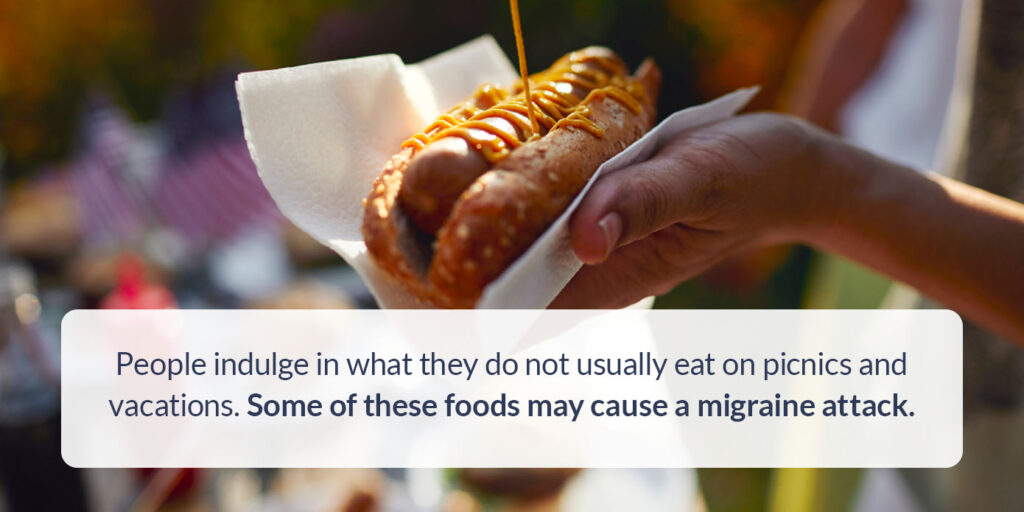
Common summer foods that have been found to trigger a migraine include:
- Hotdogs
- Bacon and sausage
- Pre-marinated meat
- Drinks with high amounts of sugar, caffeine or aspartame
- Pickled items
- Citrus fruits
- Pineapple
- Alcohol — especially beer, wine and dark liquor
- Pre-made sauce with high amounts of sugar
If you want to know if a particular food triggers your migraine symptoms, try an elimination diet — but know that sometimes it isn’t the food alone that sparks a migraine attack. When combined with other factors, like heat and physical activity, food may be enough to send you over your personal threshold.
Don’t be discouraged by the length of the list. There are plenty of other foods and alternatives you can choose to minimize your chances of developing a migraine attack. A few options include:
- Fresh cheeseburgers made with ground beef
- Pulled pork with homemade barbecue sauce
- Fresh mocktails with summer fruits
- Cool, sparkling water
3. Your plans change
It is hard to account for everything that will happen in the summer. While you might be a master planner in the other seasons, summer can disrupt your carefully curated schedule. While spontaneous plans may lead to the best adventure you have ever had, they could also lead to a migraine attack.
If a last-minute getaway causes feelings of stress, it could trigger your symptoms. When choosing a trip or event, consider how it will affect your stress levels. Unplanned trips could also cause you to turn to migraine-inducing foods or activities. Consider ways you can balance spontaneity and planning, like prioritizing staying cool and hydrated while exploring.
Get Drug-Free Migraine Relief With CEFALY
Shop Now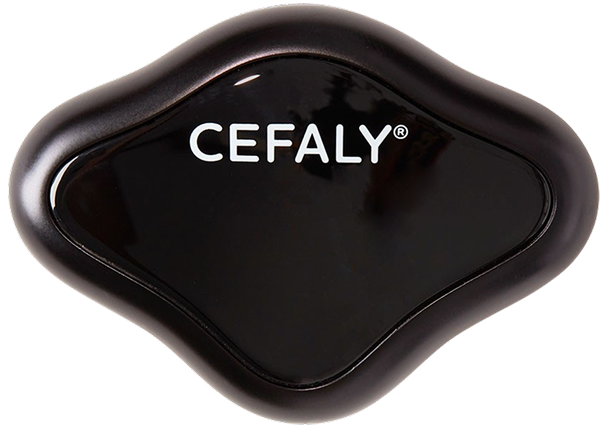
90-day money back guarantee
FDA-cleared
financing available
Tips on how to enjoy Summer with fewer migraine episodes
Now that you have a greater understanding of why your symptoms worsen in the summer, let’s go over some tips and tricks for minimizing the chance of developing a summer migraine:
1. Keep sleep patterns steady
In summer, you might rise earlier, go to sleep later, or even take a midday siesta. It feels so relaxing — but erratic sleep patterns can trigger a migraine attack. Try to stick to a regular bedtime and get up at the same hour each morning. If you’re not sleeping well, avoid too much artificial light in the evening, and keep your bedroom cool and dark.
2. Stay hydrated
There’s a clearly defined connection between dehydration and migraine attacks — and drinking extra water may reduce the frequency of attacks. In one study, a group of people with migraine were told to drink six extra cups of water per day. While they averaged only four extra cups, those participants reported 21 fewer hours of pain in a two-week period, compared to the control group.
3. Beat the heat
A study published in Neurology found a definite connection between summer heat and migraines: a 9-degree (Fahrenheit) increase in temperature correlated with a 7.5 percent increase in the likelihood of a serious migraine attack. To prevent migraines, it’s best to avoid the hottest part of the day, seek out cooler spaces and (again) drink lots of water. Rather than planning a long run or game of tennis in the middle of the day, try to plan these activities near sunrise or sunset to limit the stress put on your body. Before you agree to do any physical activity outdoors, check a weather app and a digital barometer.
4. Monitor your stress levels
Have you ever experienced a “let-down migraine”? These attacks follow a period of stress or anxiety in life. Shortly after the stress eases, a migraine attack ensues. The only good thing about let-down migraines is that they can be predicted, which means you can plan around them. Your contingency plan for stress-induced migraines might include taking paid time off, lining up additional childcare, or simply practicing stress-reducing techniques. If you’re planning a big summer vacation, try not to schedule it immediately after a big project wraps up — or, if you must, then build in a buffer of a few days to let your body and brain decompress.
5. Maintain your migraine prevention practice
Schedules have a way of fraying in the summer. Just remember that the migraine brain thrives on routine! Practice headache hygiene every week: moderate exercise, regular mealtimes, and predictable sleep.
Get Drug-Free Migraine Relief With CEFALY
Shop Now
90-day money back guarantee
FDA-cleared
financing available
6. Understand your specific weather triggers.
Common weather-related migraine triggers are temperature, humidity, bright or flickering light, winds and specific weather conditions, such as an unusual warm front, said Jan Hoffman, MD, PhD, a migraine researcher who spoke about this topic at the 2021 Migraine World Summit. Barometric pressure can also be a trigger — not low or high pressure, necessarily, but a sudden shift from one to the other.[i]
However, Dr. Hoffman said, many people who think weather is a migraine trigger may actually be triggered by something else. He theorizes that people who already are in the premonitory phase of a migraine attack may be more sensitive to changes in temperature, light or barometric pressure, so they notice them more acutely.
How can you determine your specific migraine triggers? The best way is to keep a headache diary, whether on paper or in an app. When you track your migraine attacks and symptoms, as well as factors like diet, sleep and weather, you can spot recurring patterns that may trigger your summer migraine.
7. Go low-impact.
When exercising with migraine, experts generally recommend choosing activities that go easy on your body, without jarring or pounding. Good choices include:
- Swimming
- Walking
- Cycling
- Yoga
- Tai chi
But you should follow your passion! If you love running, then run. Just stay hydrated and pay attention to your body. If you love rock-climbing, then climb. To avoid neck strain that can lead to migraine, some climbers recommend light-refracting belay glasses to wear when belaying.
8. Like a scout, be prepared for a migraine in the Summer.
If you’re venturing out for the day or the weekend, bring key elements from your migraine tool kit:
- Water: You already know that dehydration can trigger migraine attacks, and it’s easy to underestimate the amount of water you’ll need in the summer. Strenuous hiking in hot weather may require you to drink 1 liter of water — or more — per hour, according to the outdoor pros at REI. They also recommend pre-hydrating before you exercise and bringing sports drinks or powders to restore your electrolyte balance.[ii]
- Snacks: Skipping meals can also be a migraine trigger. Migraine-friendly snacks can include fresh fruit (apples, pears and grapes travel well), carrots, celery, sunflower seeds, pretzels, potato chips.
- Sunglasses and a hat: If you’re sensitive to bright light, these are a must-have. The best sunglasses for migraine are polarized, which reduce glare from reflected sunlight, or have an FL-41 tint.
- Cooling gear: To avoid overheating, wear breathable, lightweight clothing. A cooling neck wrap or evaporative hat can deliver sweet relief on blazing days.
- Acute migraine treatment: Bring your CEFALY, your migraine medication, and any other treatments you rely on.
Try CEFALY to Prevent & Relieve Migraine Pain
9. Pay attention to your other triggers
On its own, hot and humid weather might not spark a migraine attack. But if you’re already stressed or sleep-deprived, you could be at risk.
“There is more and more evidence showing that over a given month, the threshold to trigger a migraine attack varies substantially,” Dr. Hoffman said. “So there are days where you’re very susceptible to have a migraine attack, and other days where you’re not. Probably, for example, a change in weather may be the last thing you need to trigger an attack, whereas on another day, you just wouldn’t care.”
CEFALY can help raise your migraine threshold by gradually desensitizing the trigeminal nerve. CEFALY sends tiny electrical impulses through a self-adhesive electrode placed on the forehead to stimulate the trigeminal nerve, reducing the frequency and intensity of migraine attacks.
Use the 20-minute PREVENT program each day! Daily use is clinically proven to help prevent migraine attacks: In one study, CEFALY users saw an average 30% drop in migraine days after three months of treatment.
Experiencing summer migraine pain? Try CEFALY risk-free
CEFALY is an over-the-counter medical device users wear to minimize migraine pain. The device has been cleared by the FDA and is clinically proven as a safe, non-invasive way to help relieve or reduce pain from migraine in individuals 18 and older.
CEFALY offers users a drug-free way to gain migraine relief. The device uses external trigeminal nerve stimulation (eTNS) to stimulate and desensitize the trigeminal nerve, which acts as the main path for migraine pain.
Created by people who know the physical and emotional pain a migraine causes, CEFALY’s purpose is to help people relieve their migraine symptoms and enjoy more migraine-free days.
To find out more information or buy our product, visit our site today. Because we want you to love CEFALY, you can try the product for 90 days, and if you are not satisfied, send it back for a full refund.

